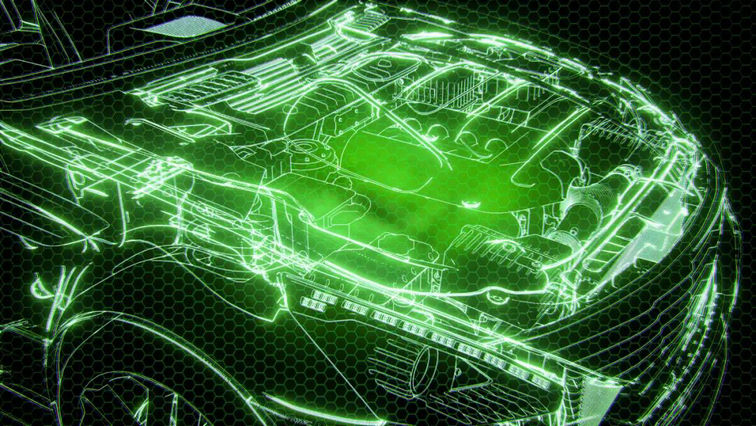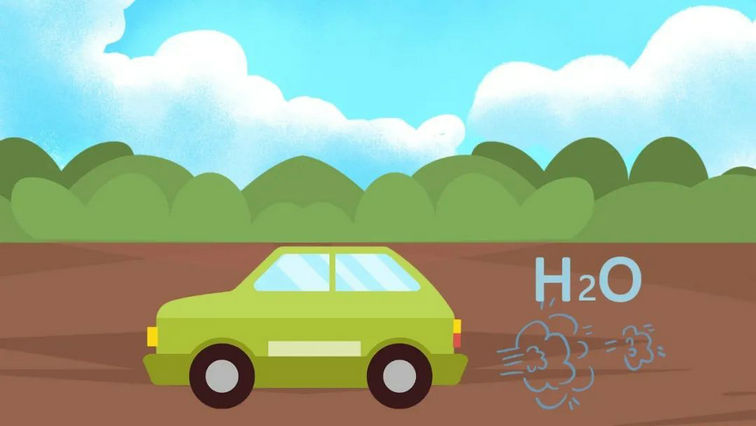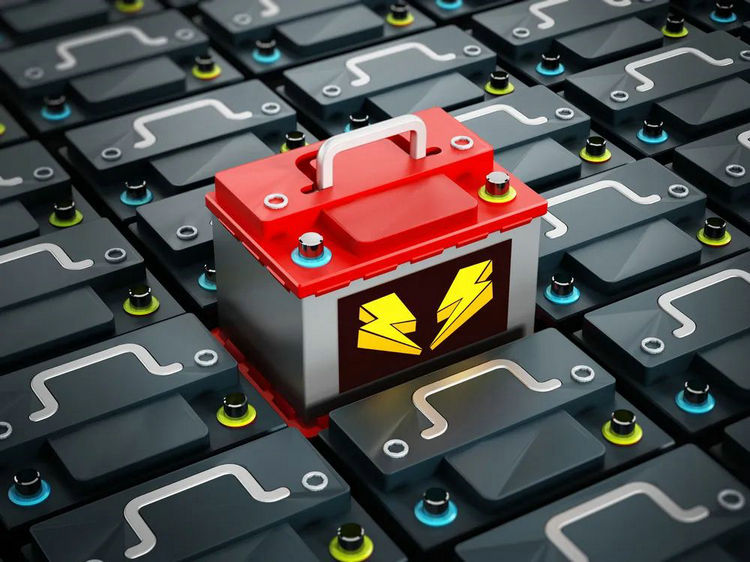| Zero carbon revolution, the vitality and changes of power battery industry |
| Release time:2022-12-27 15:40:34| Viewed: |
Zero carbon revolution, the vitality and changes of power battery industry
China's power battery industry chain is brewing a "zero carbon revolution", and the pioneers have taken action with high flags.
Huayou Cobalt Chengdu Palmer Co., Ltd. passed the certification of zero carbon cathode material factory, Ningde Times built a zero carbon factory in Yibin, Sichuan, and Yuanjing Power created a zero carbon industrial park in Ordos... From upstream raw materials to power battery production, "zero carbon" not only brings heat and voice, but also promotes the transformation and upgrading of the industrial chain from the outside to the inside. The proposal and implementation of the zero carbon vision and strategy will promote the major innovation of the power battery industry chain from the material end, equipment end to production and manufacturing. The next few years will be an important "window period".
Market forces
The development of new energy vehicles is one of the important ways to reduce carbon emissions in the transportation industry. For different types of vehicles, the key links have different priorities. Carbon reduction and emission reduction of pure electric vehicles need to focus on the production of power batteries.
It is estimated that the energy consumption required for the production of 1kWh ternary lithium battery and lithium iron phosphate battery at this stage is 82.91 kWh and 85.78 kWh respectively, and the converted carbon emissions are 50600 tons/kWh and 52300 tons/kWh respectively, which are mainly concentrated in the production of positive materials, negative materials and batteries, accounting for nearly 90% in total. Therefore, the power battery industry will be the pioneer of carbon neutralization, and will also face the reform first.
"The rise of 'zero carbon' in the power battery industry chain stems from the EU Battery Regulations and the Carbon Border Adjustment Mechanism (CBAM, carbon tariff) and other policies and regulations to be implemented by the EU under the global carbon neutral trend." Zeng Youpeng, a consultant analyst of TrendForce Jibang, said in an interview with the China Automobile News that these policies and regulations require the power battery supply chain to reduce emissions and stipulate that from July 2024, Only the power battery that has declared its carbon footprint can be put on the European market.
Zeng Youpeng stressed that the new energy vehicle market in Europe accounts for more than 30% of the global market, with huge development space. If power battery enterprises want to enter the local market in the future, they need to benchmark the EU's carbon emission regulations, otherwise they will be rejected or face high carbon taxes. The above factors force upstream and downstream enterprises in the power battery industry chain to attach importance to "zero carbon" manufacturing, and will have a greater impact on the future industry pattern.
It is reported that BMW, Mercedes Benz, Volkswagen, Volvo and other European car enterprises have put forward requirements for suppliers to trace and declare the carbon footprint of power battery throughout its life cycle in the future, which forces power battery enterprises to implement carbon emission management throughout the supply chain.
Yu Qingjiao, Secretary General of Zhongguancun New Battery Technology Innovation Alliance and Director General of the Battery Hundred Association, believes that, based on the background of carbon neutralization, driven by leading enterprises, power battery suppliers have made efforts to seize the initiative of zero carbon, build zero carbon plants, establish a carbon emission management system for products, and at the same time, they will also trace back upward, requiring the coordinated development of upstream materials, equipment and other supply chains to achieve carbon neutralization of power batteries throughout their life cycle, In turn, it will promote technological innovation, process innovation and transformation of energy consumption structure of materials in the whole industrial chain.
Some industry insiders said that external pressures, restrictions and constraints objectively gave China's power battery industry chain new opportunities for transformation and upgrading. If we can turn the crisis into an opportunity and create a new situation in the changing situation, Made in China will usher in a great new era.
"For the manufacturing industry, the realization of 'zero carbon' is not a slap in the head. The realization of 'zero carbon' for power batteries requires more careful research and planning, rather than just talking about it casually. Now many enterprises have announced the timetable for achieving carbon neutrality, but when asked about detailed planning and investment, most of the answers are vague or can't be answered at all." A staff member of the power battery enterprise who did not want to be named told reporters, At present, the company is planning a "zero carbon" path, which is still a confidential project temporarily, or will be announced later this year.
Green electricity should be source water
In fact, many industry insiders believe that the "zero carbon" declared by the power battery industry is inaccurate. The reason is that the carbon emission base of power battery production is large, and the value is still high after reducing energy consumption. Cui Dongshu, the secretary-general of the National Passenger Car Market Information Joint Conference, said frankly to reporters: "It is impossible to achieve zero emissions of power batteries at present." In his opinion, to achieve "zero carbon" of power batteries, it is necessary to track the carbon footprint from the mining sector to ensure that the carbon emissions of each link of product production are traceable, traceable, computable and quantifiable, which means that the upstream and downstream of the power battery industry chain must work together.
Wu Hui, General Manager of the Research Department of Ivey Economic Research Institute, also said in an interview that thermal power accounts for a high proportion of China's power structure, and it is impossible to achieve "zero carbon". In addition, suppliers at all levels in the upstream of power battery also have great challenges to achieve "zero carbon". In his view, the zero carbon positive material factory, zero carbon factory, zero carbon industrial park, etc. have achieved "zero carbon" locally or in the demonstration park, which is zero carbon in a small range. "The realization of 'zero carbon' is a matter for the whole power battery industry, which depends on the increase of the proportion of green electricity in China's power structure," said Wu Hui.
In view of this, the development of green electricity has become an integral part of the topic. The research report "Pioneering: The Road to Decarbonization of Materials for Zero Carbon Vehicles" jointly compiled by CCID Think Tank Safety Industry Institute and the World Industrial Research Institute mentioned that the focus of the battery emission reduction model is the production of active materials (including anode and cathode) and the production of battery packs. Therefore, there are two entry points for decarbonization: first, use low-carbon power supply, and the specific approach is to transfer the production site to the location of low-carbon power grid. Through the transfer, it is estimated that each vehicle can reduce carbon dioxide emissions by 1.5~1.8 tons, which is only half of the current emissions; Second, turn the high.
Zhao Weijun, Executive Director of Vision Power and President of China, pointed out that "whether the power battery itself or the upstream industrial chain, the core of achieving 'zero carbon' is to solve the 'zero carbon' problem at the energy end." It is reported that this is also the reason why Vision Power established a zero carbon battery industrial park in Ordos. The local scenery is rich in comprehensive energy, which can achieve "zero carbon" at the energy supply side.
From the source, the location of power battery factory has become extremely important. For example, Ningde Times is located in the "zero carbon factory" in Yibin, Sichuan Province. It is located in the junction of Yunnan, Guizhou and Sichuan. The Jinsha River, Minjiang River and Yangtze River run across the northern part of the city. The natural environment is superior and water resources are rich. According to the relevant person in charge of Ningde Times, this unique geographical location makes more than 80% of the energy of Yibin Plant in Ningde Times come from renewable energy hydropower, which can reduce 400000 tons of carbon emissions every year.
The zero carbon realization path given by Vision Power: on the one hand, it is to reduce its own emissions, on the other hand, it is to help the supply chain reduce emissions and reduce battery energy consumption as a whole. After the application of emission reduction means, there will be some residual carbon emissions, which will be offset by forest carbon sinks developed in Jilin, Liaoyuan and other places, and finally achieve zero battery emissions.
"Considering that the power battery industry chain is very long, it takes time for the industry to work together to achieve the best effect. It is impossible to achieve zero carbon development of the industry with the strength of one enterprise or several enterprises," said Wu Hui. Even if the power battery factory has achieved "zero carbon", it needs to ensure that its upstream supply chains are also "zero carbon". In other words, power battery enterprises should not "sweep the snow in front of the door by themselves", but also remove "frost on others' tiles". The reporter learned that many upstream material suppliers seek help from Vision Power to achieve "zero carbon" in the zero carbon industrial park. This also poses a severe challenge to the upstream supply chain management of power battery enterprises.
Promote technological innovation
Green electricity is the basis for realizing zero carbon power battery, and the energy cost accounts for about 30% of the manufacturing cost of upstream battery materials. Relying on low-cost green electricity, relevant enterprises will further enhance their cost advantages and have more initiative in market competition. However, the whole power battery production process will produce a lot of carbon emissions, which requires enterprises to grasp the engineering manufacturing process as a whole.
Sun Jie, Vice President of Vision Intelligence and General Manager of Vision Carbon Management, made an in-depth analysis of the characteristics of the Zero Carbon Industrial Park, which may be useful for the industry. He said that in addition to the green power supply, the indicators of several key elements involved in the zero carbon industrial park also include the layout and planning of the entire industrial chain and value chain in accordance with the "1.0", "2.0" and "3.0" development step by step and in combination with the characteristics of local industries, and more importantly, the digital empowerment of the energy and carbon management system based on artificial intelligence and Internet of Things technology.
It can be seen that whether Huayou Cobalt Chengdu Bamo "Zero Carbon" Positive Material Factory, or Ningde Times Yibin "Zero Carbon" Factory, or Vision Power "Zero Carbon Industrial Park", technical innovation, digital factory, intelligent management system and other links will be run through the supply chain to fundamentally promote industrial transformation and upgrading. In the future, this will become one of the competitive elements of power battery enterprises.
According to the 2022 Carbon Neutralization Action Report issued by Vision Group, Vision Power Jiangyin Plant carried out a series of process innovations in 2021, such as waste heat recovery of steam condensate introduced into the coating oven, humidity control of the production line, and optimization of the positive stirring process; Adopt an efficient refrigeration system with COP>6 (Coefficient of Performance), and use environment-friendly refrigerants with low GWP (Global Warming Potential); The Vision smart energy efficiency management software and the Ark energy and carbon management system were introduced to monitor energy and carbon data in real time, detect abnormal consumption in time, and manage energy cost lean.
Huayou Energy has developed a safety management and control system, a product traceability system and a quality management system around the recycling and reuse of retired power batteries to ensure the safety and reliability of the company's products. In order to realize the benign operation of products, Huayou Energy has developed cloud battery management platform, smart energy system platform, high-performance Internet of Things platform and echelon lithium battery product operation platform.
At the design stage of production line, Huayou Cobalt Chengdu Palmer Co., Ltd. studied and adopted large-scale equipment related to low energy consumption; In the project construction stage, green and environment-friendly building materials are used; In the production line operation stage, we independently developed an intelligent manufacturing system to control the operation status and energy consumption of the production line in real time.
Through continuous transformation and innovation in energy utilization, transportation and logistics, production and manufacturing and other links, Sichuan Yibin Factory of Ningde Times can make more and better products with less raw materials while reducing carbon emissions. The factory not only has a independently developed CFMS intelligent plant management system, built a digital production central control management system, but also uses global visual management to significantly reduce process losses, and AI visual inspection system automatically learns and extracts defect features.
From the perspective of the whole life cycle, "zero carbon" has driven the technical upgrading and optimization of the power battery industry chain, and process optimization and efficiency upgrading will put forward new requirements for lithium battery equipment enterprises.
Reflect cost advantage
For the power battery industry, carbon reduction is the general trend. However, there is still a lack of international standards in the industry. At this stage, China is formulating regulations on carbon footprint management of complete vehicles, such as carbon emission calculation, upstream traceability, etc. Once relevant documents are published and implemented, they will have a huge impact on the entire automobile industry. "It is now necessary to wait for the introduction of European regulations and specific domestic rules before we can talk about the impact. For some European countries that pay special attention to carbon emissions, if the carbon emission indicators of enterprise products are too high, it is not conducive to exports." Cui Dongshu said.
For the whole power battery supply chain, this "zero carbon" revolution has begun, and the pioneers are playing a leading role in demonstration. Yu Qingjiao pointed out that "under the increasingly stringent global carbon emission laws and regulations, zero carbon is an unavoidable problem for power battery enterprises in the future global market competition, a challenge and an opportunity. Accelerating the innovation and upgrading of technology and processes, and mastering the initiative of zero carbon transformation are the key to maintaining competitiveness. In the zero carbon transformation, enterprises that run fast and steadily will surely gain more market share and promote the reshaping of the industry's competitive landscape."
Wu Hui believes that zero carbon or low-carbon batteries have not yet demonstrated cost advantages. "If there is no difference in cost between products produced with green electricity and those produced with thermal power, then enterprises will still choose locations where the cost of electricity is low. If the proportion of green electricity used becomes a relatively high bonus, enterprises will certainly take this factor into account," he said.
"When the time comes, power battery enterprises that have done well in all aspects can cross the threshold of carbon reduction, and backward enterprises will be kicked out. Moreover, this is also a matter of corporate social responsibility. The development of enterprises should be in line with international standards in advance. Otherwise, it is not only costly, but also easy to go wrong." Cui Dongshu said.
At present, the output of power battery in China accounts for about 70% of the global market, maintaining a leading position. As leading enterprises in the industry chain, such as Ningde Times, Yuanjing Power, Funeng Technology, Guoxuan Hi Tech, Huayou Cobalt, are accelerating the implementation and practice of the "zero carbon" goal, China's power battery industry will still have greater opportunities to maintain its advantages in the future.
Zeng Youpeng proposed that in the future, the carbon emissions of vehicles in major countries and regions in the world will be similar to those in Europe, and low carbon or even zero carbon will become one of the core elements for power battery enterprises to participate in global competition. It should be noted that local power battery enterprises in Europe, such as Northvolt, ACC, Hydrovolt, are also accelerating their rise. In addition, auto enterprises are also accelerating their efforts to build battery plants. For example, Volkswagen plans to establish six battery manufacturers in Europe by 2030. In the future, domestic power battery enterprises will face greater challenges in "going overseas".
This powerful zero carbon revolution has become a must for the future development of the global power battery industry. Whether the existing advantages can be maintained or even new advantages can be formed is a test for the upstream and downstream enterprises of China's power battery industry chain. In the "window period" of the next few years, actively explore the path to achieve zero carbon. Collaborative supply chain upgrading and development will become the key to enterprise success. |










